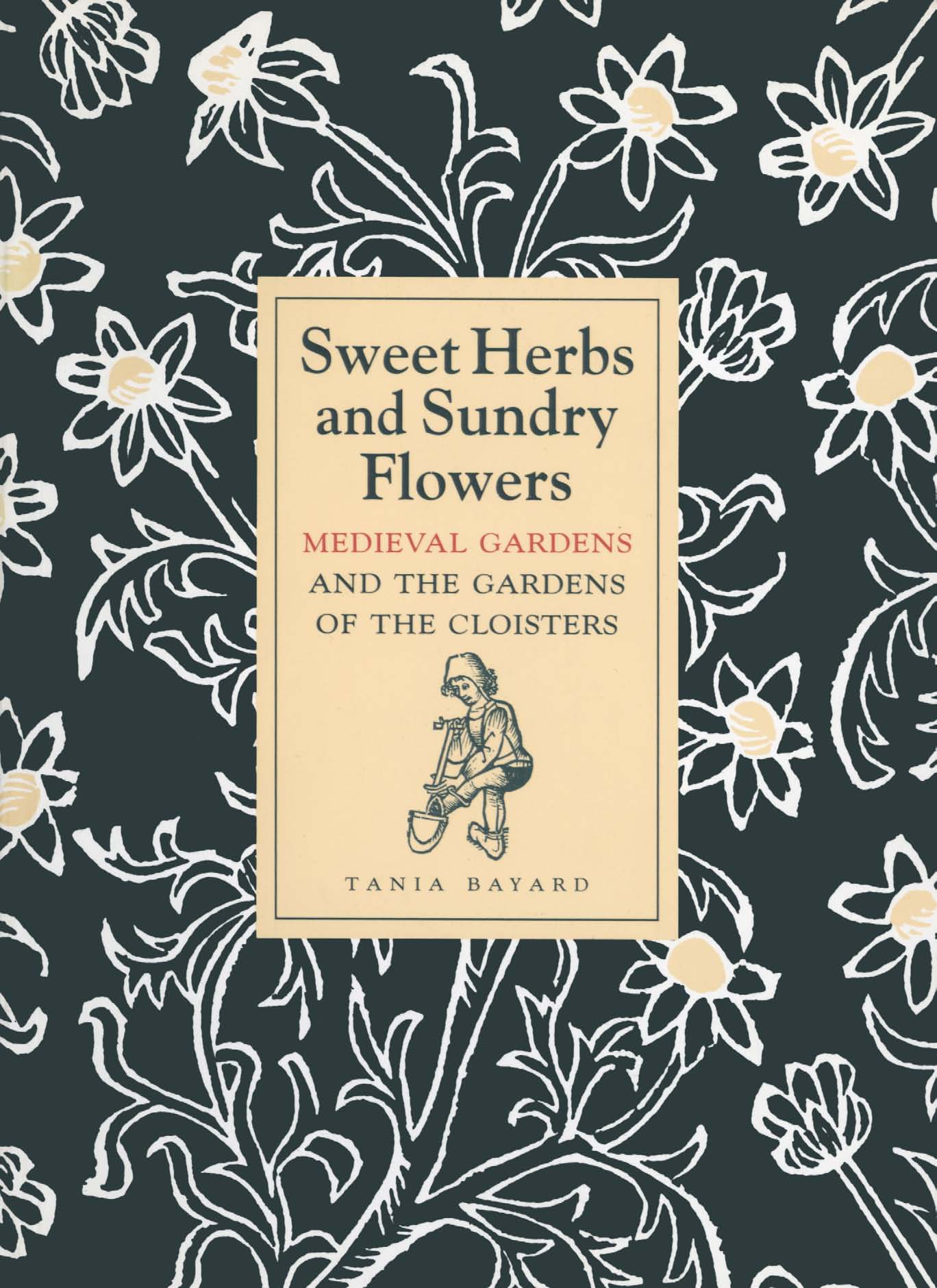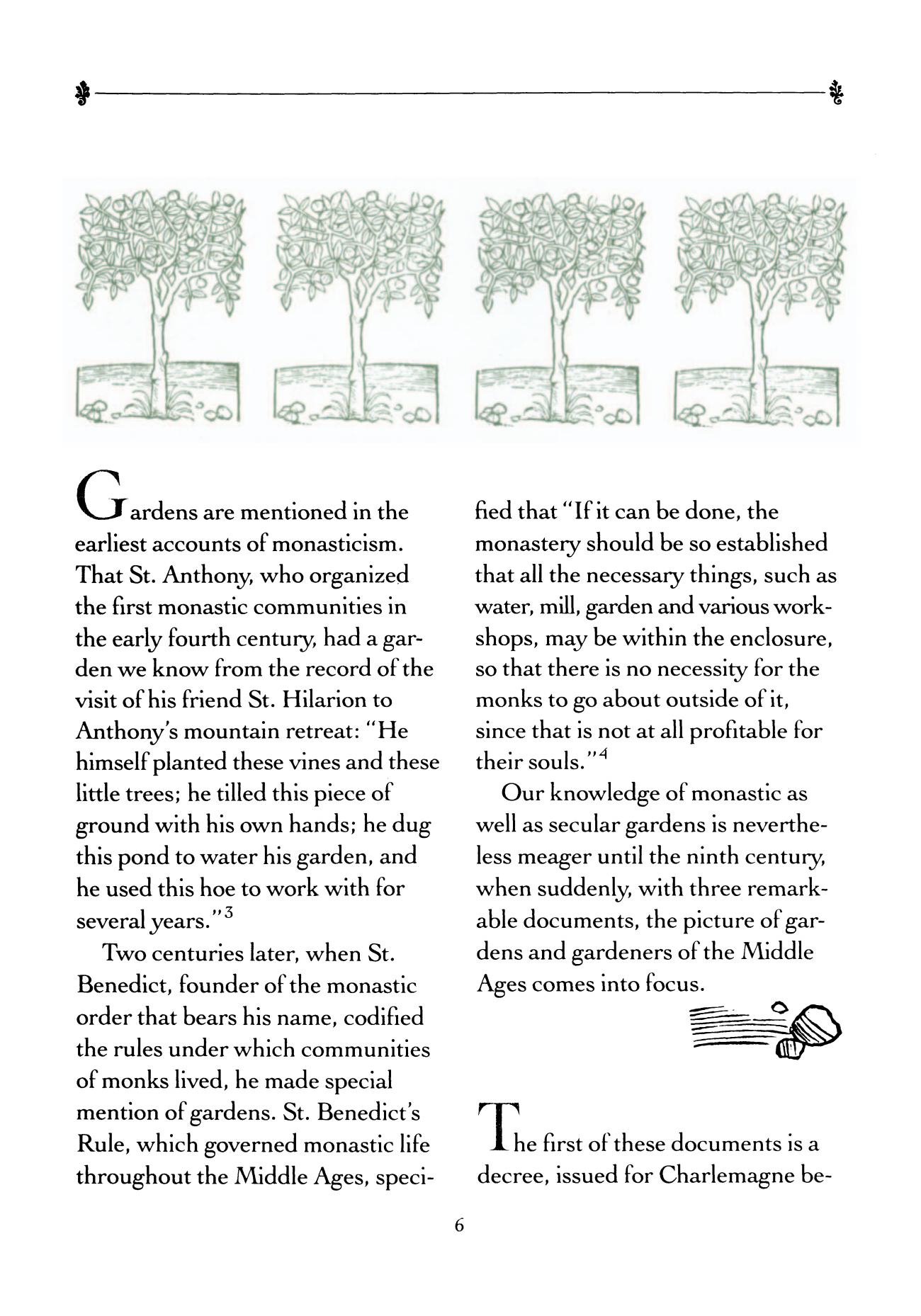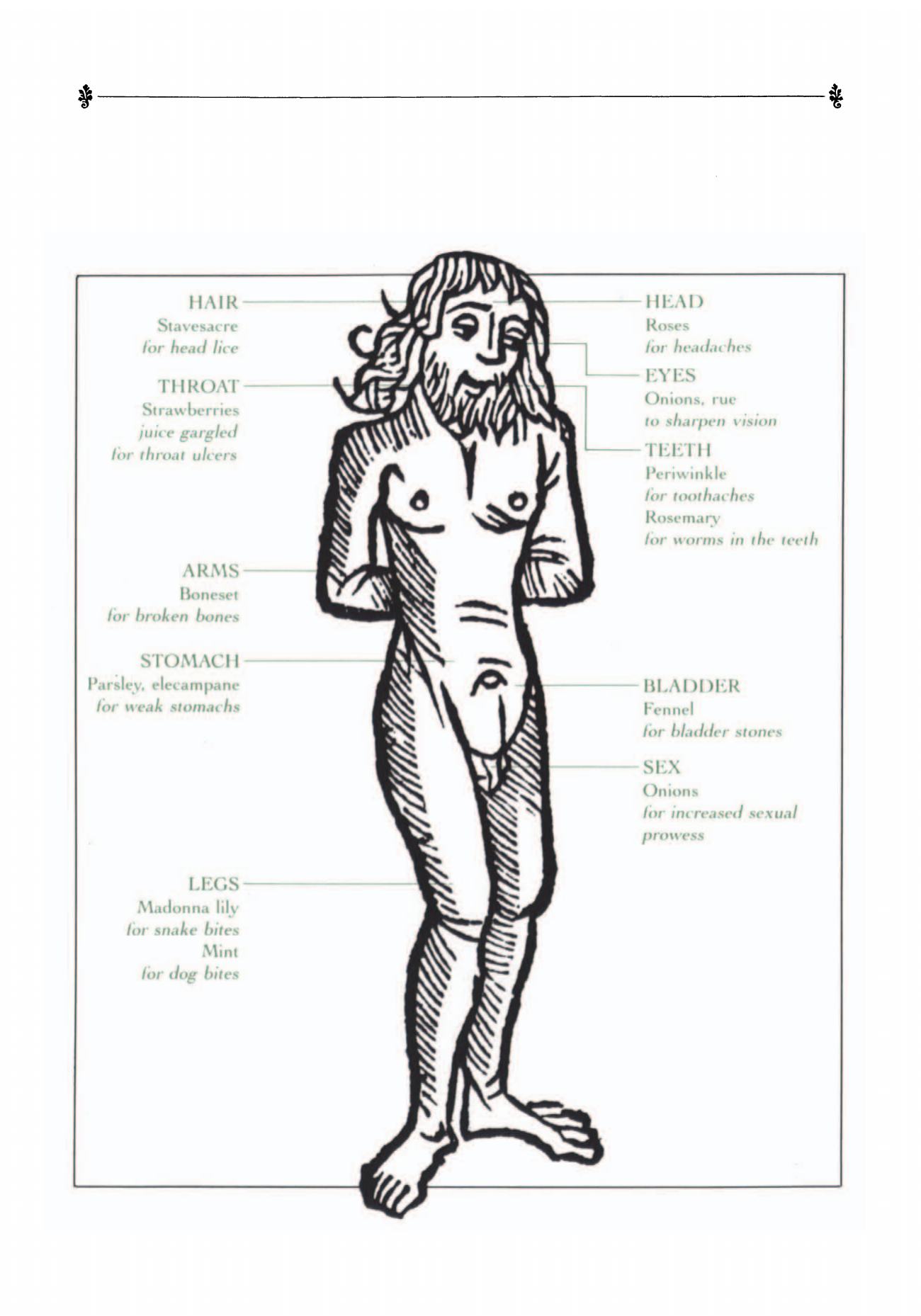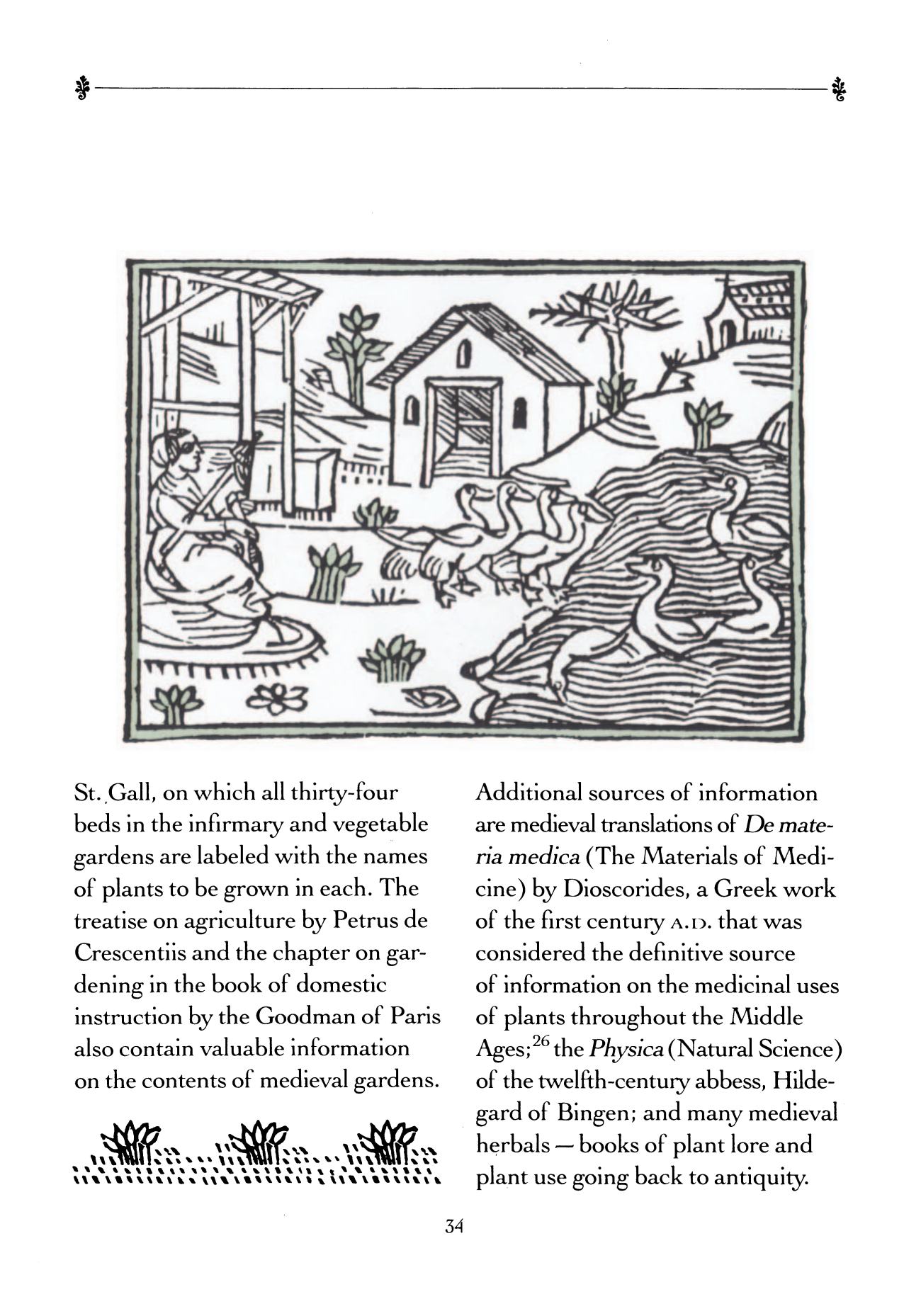|
|
Tania Bayard. Sweet Herbs and Sundry Flowers: Medieval Gardens and the Gardens of The Cloisters. — New York, 1997  Sweet Herbs and Sundry Flowers: Medieval Gardens and the Gardens of The Cloisters / Tania Bayard. — New York : Metropolitan Museum of Art, 1997. — XIV, 97 p., ill. — ISBN 0-87099-775-0FOREWORD
If you have walked through a wood of wild ginger, forget-me-nots, and unfurling ferns, or wandered in a meadow of strawberries, yarrow, and oxeye daisies, you have had the opportunity to admire medieval plants. Sweet Herbs and Sundry Flowers is an introduction to medieval plants and gardening practices by way of the gardens of The Cloisters. In her work as assistant horticulturist at The Cloisters, Tania Bayard has become aware of the many questions visitors ask about medieval gardening. Tania addresses those questions here, providing a list of the plants in The Cloisters’ gardens. Her book has long been needed, and I am pleased that Tania, who left a career in art history to become a horticulturist, shares her knowledge and experience with us.
Gardening is an art shaped by the gardener, using a palette of light, water, soil, special living matter, and time. For modern medieval gardeners historical time is also a factor. Plant lists from medieval sources must be consulted and plant names checked against those found in taxonomic encyclopedias and guides to European flora. At The Cloisters, seeds for medieval annuals, biennials, and perennials are ordered from North American seed companies and through seed catalogues from European botanic gardens. We are not always easily able to find what we need. Some seeds are hard to locate and are therefore in our “rare” category; other medieval species of seeds are not commonly grown and are unavailable from regular commercial companies; still other plants may have no long-term ornamental value in a display garden, may be of a sprawling rampant nature unbecoming in a small garden, or may have special requirements that make them difficult to grow.
Seed orders are completed during the months of December and January. The seeds are sown in flats in a greenhouse, and after the last spring frost the young seedlings are planted in the cloistered gardens. Once the plants come into bloom their flowers, leaves, and fruits are gathered for comparison with medieval plant descriptions. Frequently a fake — a plant assumed, until it flowers, to be a medieval species — is found. Several years ago we planted seeds for the clove-pink carnation (Dianthus caryophyllus), which has a lovely clove-scented flower that is depicted in the Unicorn Tapestries. When the plants came into bloom their flowers were deep pink with dark burgundy centers. Clearly here was a different species. Our search for the true seed had to begin again.
Many people want to grow medieval plants in their own gardens, where they can enjoy the smells, textures, and colors throughout the growing season. Whether your “garden” is a shady plot of sweet woodruff and primroses, a sunny backyard of Madonna lilies, cabbage roses, and lavender, or only a pot of parsley, you can easily grow and enjoy medieval plants. Take note of the Latin and common names of plants that attract you; a catalogue of old varieties of seeds and a gardening book will guide you the rest of the way.
The delight in reading Sweet Herbs and Sundry Flowers is the realization that the modern gardener's experience is not unlike that of gardeners one thousand years ago. Then, as now, garden plots were selected for adequate light and water drainage, the soil was prepared in the spring, noxious weeds and stones were removed, the ground was tilled and raked, and cow manure was added for fertilizer. Seeds and young plants were lovingly tended. When the plants were mature, roots, stems, leaves, flowers, and fruits were harvested for food, medicines, and various household uses. Following the fall harvest, the ground was readied for winter, and thoughts of spring were always present. How wonderful it is that we share with the medieval gardener the same labors and joys, getting our hands dirty with soil as did the ninth-century monk, Walahfrid Strabo.
Susan Taylor Moody
Horticulturist, The Cloisters
INTRODUCTION
The gardens of The Cloisters bloom in a unique museum, a division of The Metropolitan Museum of Art, designed to suggest the layout of a medieval European monastery. Planted in reconstructed Romanesque and Gothic cloisters, the gardens resemble those that provided bodily sustenance and spiritual refreshment for monks of centuries ago.
The gardens help to set the tone of the Museum. The Cuxa Cloister garden, a haven of sunlight, brightly colored flowers, bird song, and splashing water, is the focal point of the main-floor galleries. The Trie Cloister contains a garden of plants depicted in the Unicorn Tapestries that hang in the Museum; here small birds come to drink from a fountain just as they do in the late-Gothic hangings after which the garden was designed. The Bonnefont Cloister garden is fragrant with the household herbs grown in the gardens of the Middle Ages. The views over the walls that border the Bonnefont garden on two sides are spectacular, revealing the Museum's dramatic situation on ledges high above Fort Tryon Park and the Hudson River. The Cloisters, like its medieval predecessors, is walled and self-contained. Within the monastic enclosure, gardens were essential for survival.
The gardens enhance the setting in which The Cloisters' collection of medieval art is displayed and broaden the visitor's understanding of life in the Middle Ages. James J. Rorimer, curator of the Department of Medieval Art at the time The Cloisters was planned and built, took an active interest in the gardens and supervised their design and the choice of plants. He was aided by Margaret B. Freeman, who did extensive research on the history and symbolism of the plants of the Middle Ages. When the Museum opened in 1938, with Mr. Rorimer in charge, the gardens were one of its major attractions, and they continue to be so today.
With the exception of some of the flowers in the Cuxa Cloister, where modern varieties have been included to ensure continuous bloom throughout the summer, all the species of plants in the gardens were known in the Middle Ages — a time period extending roughly from the fourth century to the early fifteenth century in Italy and to the early sixteenth century in northern Europe.
The gardens are maintained by a horticultural staff engaged in research as well as gardening. As new information on gardening practices and plants of the Middle Ages becomes available, the gardens are further developed. Containing over two hundred and fifty species of herbs, flowers, and trees, the gardens of The Cloisters comprise one of the most important specialized plant collections in the world.
CONTENTS
Introduction.. 1
Gardening in the Middle Ages.. 5
The Uses of Herbs in the Middle Ages.. 17
The Gardens of the Cloisters.. 31
The Cuxa Cloister Garth Garden.. 37
The Bonnefort Cloister Herb Garden.. 47
The Trie Cloister Garden.. 69
Indoor Plants: The Saint-Guilhem and Cuxa Cloisters.. 79
Notes.. 85
Suggestions for Further Reading.. 91
List of Illustrations.. 96
Sample pages   
Download link (pdf, yandexdisk; 15,0 MB)
Все авторские права на данный материал сохраняются за правообладателем. Электронная версия публикуется исключительно для использования в информационных, научных, учебных или культурных целях. Любое коммерческое использование запрещено. В случае возникновения вопросов в сфере авторских прав пишите по адресу 42@tehne.com.
3 января 2020, 17:01
0 комментариев
|
Партнёры
|






Комментарии
Добавить комментарий